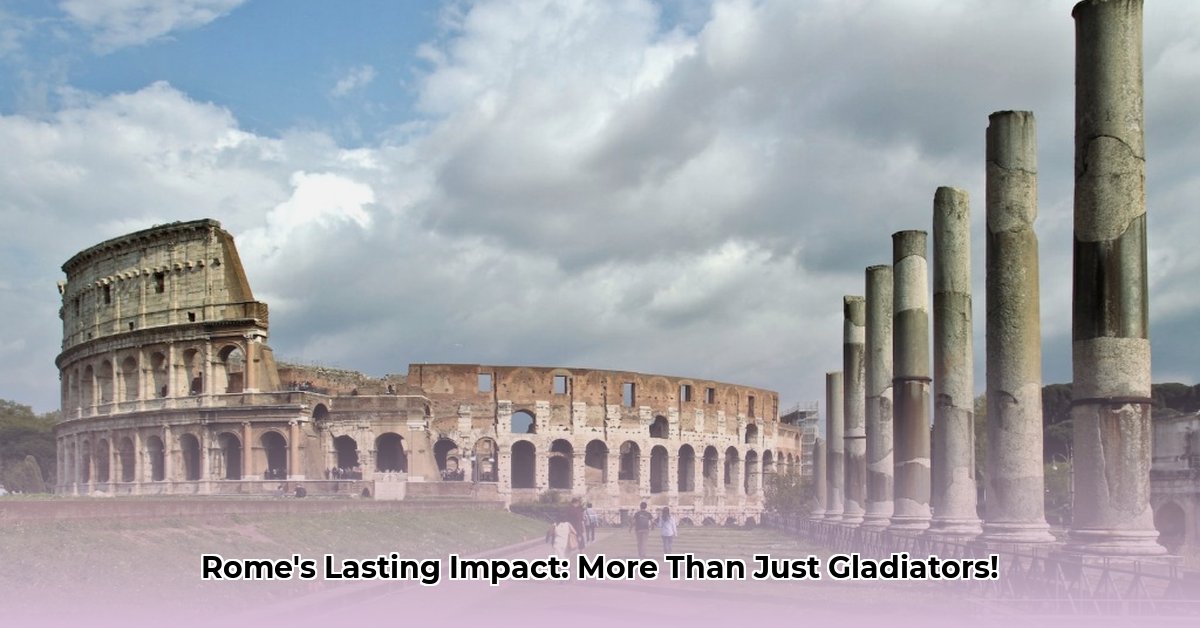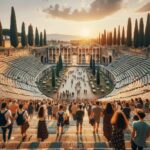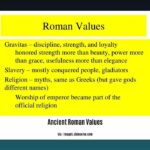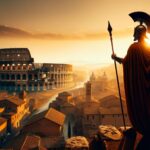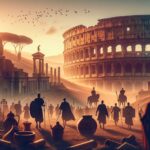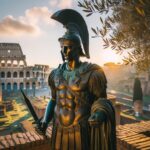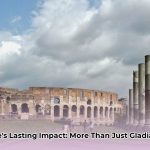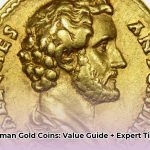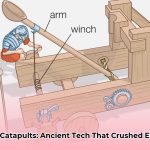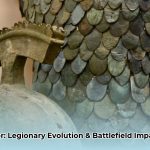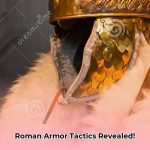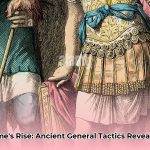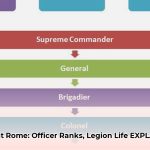So, you might think of ancient Rome and immediately picture gladiators, right? The Colosseum, epic battles, powerful emperors – fair enough. But what if I told you that the real Roman legacy lies not just in the spectacles, but in the sophisticated systems that quenched the thirst of a million citizens, or the legal principles that still echo in our courts today? Intriguing, isn’t it? Learn more about these Roman achievements. Beyond the popular imagery, the Romans were master innovators whose ingenuity laid foundations for much of our modern world. Their remarkable accomplishments, spanning engineering, law, language, and societal organization, continue to resonate, quietly influencing our daily routines centuries later. Let’s delve into some of their most significant contributions, the ones that truly continue to shape our lives.
Engineering the Future: Structures That Endured
When it came to large-scale construction and infrastructure, the Romans were simply unparalleled. Their vision, combined with an acute understanding of practical engineering, produced marvels that have withstood the test of time, some still in use today.
Masterful Aqueducts: Lifeblood of the Empire
Imagine cities thriving without a reliable water supply. It was an impossibility for the Romans, who solved this fundamental challenge with magnificent aqueducts. These structures were far from basic channels; they represented sophisticated hydraulic engineering, some stretching for over 50 miles (80 kilometers), meticulously designed with precise gradients to deliver fresh, clean water directly into the heart of their bustling urban centers. One such impressive structure, like the Aqua Claudia, was capable of delivering over 150,000 cubic meters (40 million gallons) of water daily, enabling cities to flourish and expand in ways previously unimaginable. We often take clean, running water for granted today, but its very availability is a direct descendant of these early, groundbreaking innovations in water management. Iconic examples like the Pont du Gard in France and the Aqueduct of Segovia in Spain stand as towering testaments to their ingenuity.
The Unyielding Roman Roads: Arteries of Empire and Commerce
Then there are the legendary Roman roads, a vast, interconnected network that traversed their immense empire, ultimately exceeding 250,000 miles (400,000 kilometers) in total length. These were not mere dirt paths; they were meticulously engineered pathways, often built with multiple layers of gravel, sand, and compacted soil, topped with large, interlocking paving stones cut from granite or hardened volcanic lava. Their construction facilitated rapid troop movements, invigorated trade between distant provinces, and fundamentally unified the entire empire, allowing goods, messages, and legions to travel with unprecedented efficiency. Remarkably, even in our modern era, some highways still follow the very same routes initially laid down by Roman engineers centuries ago, incorporating their practical innovations like constructing bridges over water bodies and tunneling through hills rather than diverting the road. That is a testament to their enduring quality, isn’t it?
Concrete and Arches: Revolutionary Construction Materials
The Romans didn’t just build; they revolutionized how to build. Their pioneering use of concrete, known as opus caementicium, was a game-changer. This revolutionary building material, made from a mixture of volcanic ash (pozzolana), lime, and aggregate, was incredibly strong, versatile, and surprisingly environmentally friendly compared to much later concrete. What’s more, Roman concrete, particularly that used in marine environments, has proven more durable than much modern concrete, actually getting stronger over time due to a unique chemical reaction that forms self-reinforcing crystals.
Coupled with their mastery of the arch, vault, and dome, concrete allowed the Romans to construct monumental structures of unprecedented scale and complexity, like the Colosseum, the Pantheon with its massive unsupported dome, and countless bridges and public buildings. The arch, though known before, was perfected by the Romans to distribute weight, allowing for larger spans and more durable construction, becoming a foundational aspect of Western architecture.
Shaping Society: Law, Governance, and Urban Life
Beyond their physical infrastructure, the Romans developed sophisticated systems for governing and organizing their vast society, many of which laid the groundwork for modern civil structures.
The Enduring Pillars of Justice: Roman Law
Arguably one of the most pivotal achievements in ancient Rome was their comprehensive legal system. Far from a collection of arbitrary rules, it was a meticulously developed framework emphasizing written laws and standardized judicial procedures. Rooted in foundational documents like the “Twelve Tables,” displayed publicly for all citizens, and later codified into the “Corpus Juris Civilis” under Emperor Justinian I, this system instilled a sense of fairness, order, and consistency that profoundly influenced legal structures across Europe and beyond. Foundational concepts like “innocent until proven guilty,” “equality before the law,” “due process” (the right to a fair legal proceeding), and “natural rights” (inherent, universal rights every individual possesses) – ideas so integral to contemporary justice – can trace their origins directly back to Roman law. It’s almost as if they crafted the very blueprint for how we conceive of right and wrong, forming the basic framework for civil law, the most widely used legal system today.
Organizing a Civilization: Census and Urban Planning
The Romans truly excelled at societal organization. Consider the census, for example. This was far more than a simple head count; it represented a systematic method for gathering comprehensive population data, empowering the government to efficiently manage resources, equitably allocate taxes, and strategically plan for future societal needs. This early, sophisticated form of data collection delivered invaluable insights into the lives of everyday Romans, allowing for effective administration of their sprawling empire.
Their organizational prowess extended seamlessly into the design of their cities. Roman urban centers were renowned for their orderly layouts, typically featuring grid-patterned streets, dedicated public spaces for communal gatherings (like the Forum), and highly efficient systems for water and sanitation that included public baths and sophisticated sewers. They meticulously considered how to enhance the quality of life for their citizens, and their innovative urban planning principles influenced city design for centuries thereafter.
Representative Beginnings: The Roman Republic’s Government
The establishment of the Roman Republic marked a significant departure from autocratic rule prevalent in many ancient societies. Characterized by a system of representative government, eligible male citizens had the right to vote and elect officials to represent their interests. While not a full democracy by modern standards, featuring a powerful Senate and popular assemblies, this system allowed citizens to participate in decision-making and laid the groundwork for later democratic systems.
Intellect and Communication: Language, Literature, and Time
The Roman impact wasn’t confined to physical structures; it permeated the intellectual and cultural landscape, shaping how we communicate, measure time, and understand the world.
The Julian Calendar: Our Daily Timekeeper
Have you ever considered the calendar you rely on daily? You might be surprised to learn how much we owe to the Romans. Julius Caesar himself, advised by astronomers, introduced the Julian calendar in 45 BCE. This solar-based calendar, with its 365 days and an intercalary day every fourth year (the leap year), subsequently served as the fundamental basis for the Gregorian calendar we use worldwide today. While certain refinements were introduced in the 16th century (a minor 0.002% correction to the year’s length), the core structure – dividing the year into twelve months with a specific number of days – remains remarkably consistent. Even the names of many of our months derive directly from Latin.
Latin: The Eternal Language
And what about Latin? Though frequently labeled a “dead language,” its influence is anything but. For centuries, Latin served as the lingua franca (common language) of scholars, diplomats, and the Church throughout Europe, acting as the common intellectual tongue. It profoundly shaped the evolution of numerous modern languages, directly developing into the Romance languages (Italian, Spanish, French, Portuguese, and Romanian) and significantly influencing English, with over 60% of English words having Latin or Greek roots. Just pause to think: a significant number of scientific, medical, and legal terms we routinely employ today derive directly from Latin roots.
From Acta Diurna to Roman Numerals: Everyday Innovations
Beyond grand systems, the Romans made practical contributions to daily communication and record-keeping. They produced Acta Diurna, or “daily acts,” which were inscribed on metal or stone tablets and displayed in public places like the Roman Forum. These served as a forerunner to modern newspapers, broadcasting military victories, gladiatorial bout lists, birth and death notices, and other public information. In mathematics, they developed the Roman Numerals system (I, V, X, L, C, D, M), which, despite its limitations for complex calculations, was simple enough for everyday use and continues to appear on clocks, book chapters, and in decorative contexts. They also developed sophisticated central heating systems, known as hypocausts, circulating hot air through pipes beneath floors and within walls, offering unprecedented warmth and comfort in private residences and public baths.
Literary and Philosophical Heights
Roman writers and philosophers made significant contributions to literature and intellectual thought. Epic poets like Virgil, known for the “Aeneid,” shaped Roman identity. Playwrights such as Terence and Plautus laid groundwork for comedic theater. In philosophy, thinkers like Seneca, Marcus Aurelius, and Cicero explored a range of ethical, political, and existential ideas, leaving behind a rich body of work that reflected the intellectual climate and provided insight into human nature, influencing Western philosophy for centuries.
The Art of Warfare and Health: Military and Medical Advancements
The Roman Empire’s vastness was largely thanks to its formidable military, which itself was a hotbed of innovation. This extended even to the well-being of its soldiers.
Strategic Prowess: Roman Military Innovations
The Roman military was not just large; it was exceptionally organized, disciplined, and innovative. Their legions were meticulously trained units, employing highly effective tactics like the “testudo” (tortoise formation) where soldiers interlocked shields to create a formidable protective shell against missile attacks. Beyond formations, they innovated weapons like the pilum, a heavy javelin designed to pierce shields and bend, rendering the enemy shield useless. They also deployed advanced siege engines, catapults, and even specialized naval equipment like the corvus, a boarding bridge that allowed Roman soldiers to grapple and board enemy ships during naval battles. Perhaps most notably, the Romans were pioneers in military medicine, establishing trained medical corps that traveled with the legions, performing on-field surgeries and providing care that saved countless lives, a precursor to modern military healthcare systems.
Key Roman Achievements at a Glance
To give you a clearer snapshot, here’s a table summarizing some pivotal Roman achievements and their enduring impact:
| Achievement | Description | Modern Impact |
|---|---|---|
| Aqueducts | Sophisticated elevated channels and tunnels designed to deliver fresh water from distant sources to urban centers, ensuring reliable supply for drinking, public baths, and sanitation. | Foundation for modern water supply and distribution systems, influencing urban planning and public health infrastructure worldwide. |
| Roads | An extensive, meticulously engineered network of durable, paved roads (over 250,000 miles) connecting all parts of the empire, built with multiple layers and advanced techniques. | Basis for modern highway infrastructure, transportation networks, and logistical planning; some ancient routes are still in use today. |
| Concrete & Arches | Pioneering use of opus caementicium (Roman concrete), a highly durable and versatile building material, combined with perfected architectural elements like arches, vaults, and domes, enabling unprecedented scale and complexity in construction. | Essential for large-scale construction, from buildings and bridges to essential infrastructure; Roman concrete’s unique self-healing properties continue to inspire modern material science. |
| Roman Law | A structured, comprehensive legal system based on written codes (e.g., Twelve Tables, Corpus Juris Civilis), emphasizing principles of justice, fairness, due process, and equality before the law. | Fundamental influence on legal systems globally, forming the basic framework for civil law, inspiring concepts of rights and justice in common law, and shaping contemporary jurisprudence. |
| Julian Calendar | A solar calendar introduced by Julius Caesar, consisting of 12 months, 365 days, and a leap year every four years, designed to accurately track the seasons. | Direct precursor to the Gregorian calendar, used worldwide today; its structure and month names are deeply embedded in our daily lives. |
| Latin Language | The official language of ancient Rome and its vast empire, serving as the lingua franca for centuries among scholars, diplomats, and the Church, with a sophisticated literary tradition. | Significant influence on the development of Romance languages (Italian, Spanish, French, etc.) and English; continues to be prevalent in scientific, medical, and legal terminology. |
| Census | A systematic method for accurately counting and surveying the population, property, and resources of the empire, serving as a basis for taxation, military recruitment, and resource allocation. | Basis for modern demographic data collection, national censuses, public policy, and government planning worldwide. |
| Military Innovations | Development of highly organized legions, effective tactics (e.g., testudo formation), advanced weaponry (e.g., pilum, carroballista, corvus), and the establishment of dedicated military medical corps for on-field care. | Influenced military organization, tactics, and engineering for centuries; the concept of dedicated military healthcare remains a critical component of modern armed forces. |
| Urban Planning | Development of planned cities with grid-patterned streets, public spaces (fora), advanced sanitation, and public amenities like baths, designed for efficient living and civic engagement. | Influenced city planning, infrastructure development, and the design of public spaces in Western civilization, shaping how urban environments are structured for functionality and quality of life. |
So, the next time you drive down a well-maintained road, turn on a tap for clean water, consider the principles of justice in a court of law, or even glance at a calendar, take a moment to remember the Romans. Their multifaceted influence is all around us, shaping our world in countless, often unseen, ways. Makes you pause and think, doesn’t it?
The Fading Echoes: Why Roman Innovations Declined
The Roman Empire: a powerhouse of innovation, a cradle of civilization. But what happened to all those brilliant ideas? Why did the once-prolific stream of Roman innovations decline, fading from prominence after centuries of shaping Western civilization? It’s not a simple story, but one interwoven with threads of societal shifts, economic pressures, and the relentless march of time that ultimately led to the fall of the Western Roman Empire.
The Strain of an Overstretched Empire and Economic Hardship
Maintaining such a colossal empire was an immense challenge, and arguably, the very seeds of decline were embedded within its structure. The unending demand for resources, the extensive bureaucracy required to manage vast territories, and the sheer logistical nightmare of keeping everything running smoothly across immense distances – all of these factors took a significant toll. As the empire faced escalating economic hardship, exacerbated by inflation, trade disruptions, and an overreliance on slave labor rather than technological innovation, vital funding and incentives for research and development inevitably dwindled. Resources were critically stretched, and the primary focus shifted from invention to survival and military defense. Innovation, which thrives on stability and investment, often took a backseat to the more immediate need for mere sustenance and protection against external threats.
Shifting Priorities and Loss of Drive
Over time, the Roman elite’s priorities began to shift. While early Romans were driven by a pragmatic desire for efficiency and conquest, later periods saw a gradual decline in the pursuit of practical innovation. The emphasis moved towards maintaining existing structures and traditions rather than pioneering new ones. The intellectual focus sometimes veered towards philosophy, rhetoric, or aesthetic pursuits, rather than the engineering and administrative challenges that characterized earlier periods. As the empire became more fragmented and internal conflicts grew, the centralized drive for grand, unifying projects that characterized earlier Roman achievements diminished.
External Pressures and Internal Strife
The constant incursions from barbarian tribes, coupled with internal political instability, civil wars, and a series of weak or short-lived emperors, further diverted attention and resources away from innovation. Maintaining vast armies to defend ever-porous borders became the paramount concern. The infrastructure, once a symbol of Roman prowess, began to suffer from neglect due to lack of funding and skilled labor, and the knowledge required to build and maintain complex systems like aqueducts and roads was gradually lost or fragmented. The societal disruption meant that the environment conducive to innovation – one of peace, prosperity, and intellectual exchange – was severely eroded.
Ultimately, the decline of Roman innovations was not a sudden collapse but a gradual wane, mirroring the broader decline of the Western Roman Empire itself. The very forces that led to its fragmentation – economic instability, external pressures, and internal decay – siphoned off the vitality and resources necessary for continued advancement. However, the foundational principles and structures they created proved so robust that their echoes continue to resonate, proving that even in decline, their ingenuity left an indelible mark on human civilization.
- Unlock History: Ancient Roman Coin Necklace Trends & Buys - August 17, 2025
- Beyond Gladiators: Achievements in Ancient Rome Still Shaping Our World - August 17, 2025
- Unearth ancient roman necklace history: price & where to buy now - August 17, 2025
